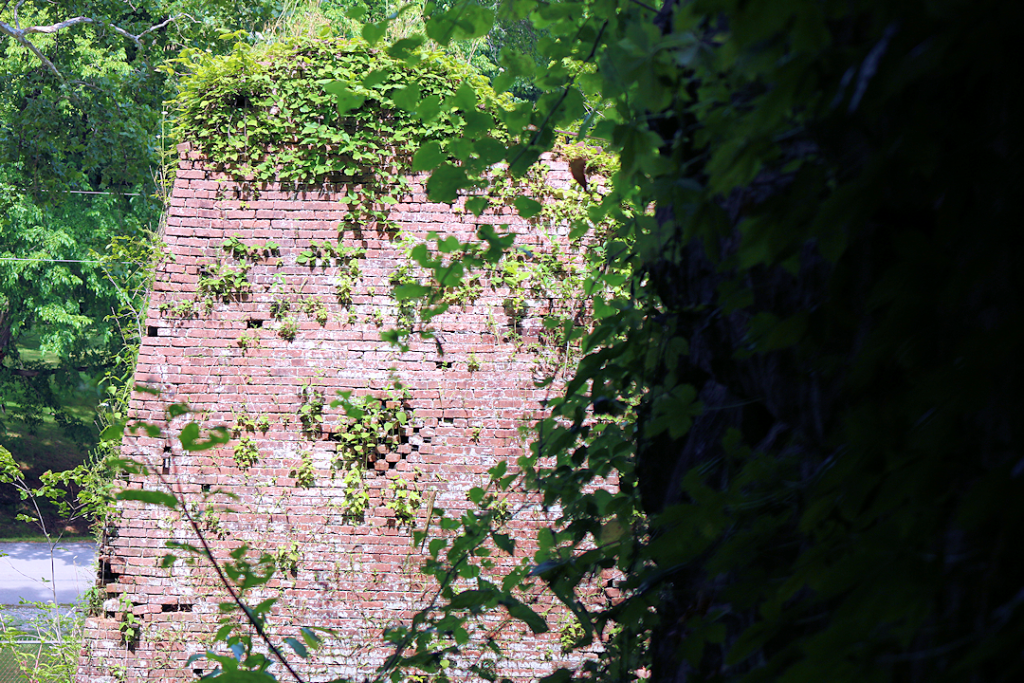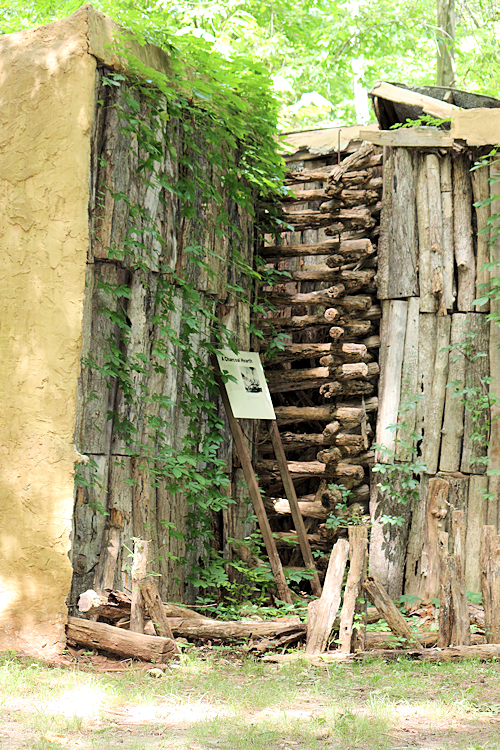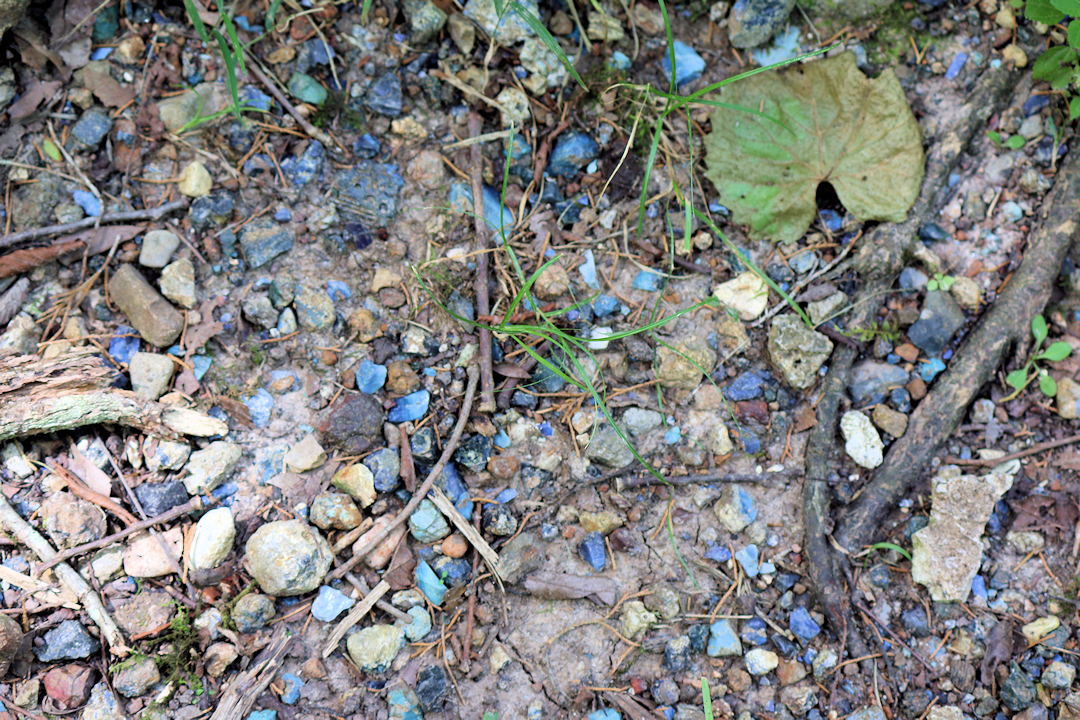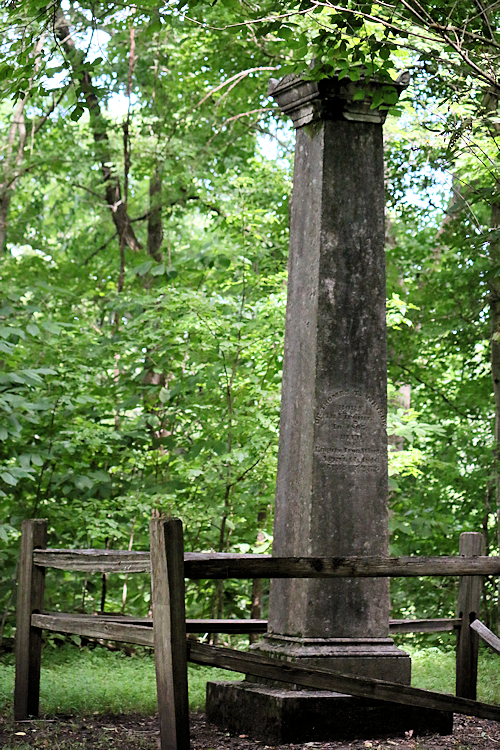Light Blue Stones Found on the Ground at Land Between the Lakes
In the mid-1800s, the iron ore industry exploded in the area known as "Between the Rivers." With its prime location due to its close proximity to the Cumberland and Tennessee rivers, the industry flourished. These rivers were the best way to transport goods since railroads did not exist in this area at that time.
Today we know the Between the Rivers area as Land Between The Lakes (LBL). Eight furnaces operated in LBL beginning in the 1840s. Most of them were short-lived largely due to the lack of resources or bad location. Today only two of the furnaces' remains exist. Time obliterated some, with Lake Barkley burying others.
Two of the eight furnaces survived: the Great Western Iron Furnace, located at the former site of Model, Tenn., and Center Furnace, located near Hematite Lake. Center Furnace was the most successful operation in LBL. A trail is located by the furnace with exhibits which explain how the furnace industry there worked.
What's The Point of Center Furnace?

Like other furnaces in the region, Center Furnace used a firing process to melt and create "pig iron." Think of it as a three-story brick oven. The oven, located next to a hill, featured a covered ramp or bridge coming from the hill to the top of the furnace. This allowed workers to dump materials into the furnace.
Materials used were charcoal, limestone and hematite ore. Hematite contained about 60% pure iron. However, similar to the process of purifying gold, the iron had to be extracted from the hematite to produce the iron bars.
Workers would dump the materials into the furnace. Tremendous heat would build up inside the furnace, melting the iron ore and limestone while consuming the charcoal. Liquid limestone and iron would run down to the bottom of the furnace. The melted limestone would float to the top of the iron which ran off about every thirty minutes. This by-product, known as slag, was dumped all around the area.
The melted iron ore would collect at the bottom of the furnace in a pot-like structure. Workers would empty the pot every six hours or so by opening a metal door. The molten iron would travel down into wet sand channels. The name "pig iron" comes from the channels resembling a sow nursing her piglets. The long bar was known as the sow and the bars protruding from it were piglets – thus, the term "pig iron."
Making Charcoal

Charcoal was used to create the high heat required to melt the hematite and limestone. Of course, one couldn't just by loads of charcoal in the 1800s, so they created charcoal on site. Numerous trees were cut and chopped. Workers would create charcoal hearths lined with dirt to create smaller ovens for the wood to burn. With the hearth sealed and deprived of oxygen, the wood burned very slowly, creating charcoal to use at the furnace.
These charcoal hearths would take about two weeks to create 2,000 bushels of charcoal. Interestingly, the amount produced would only blast the furnace for about 24 hours. Therefore, many of these hearths were created around the area to make charcoal.
Unfortunately, the hearths were an environmental killer. Even today, vegetation and trees have a hard time growing where a hearth stood due to the toxins and acids burned into the soil.
Center Furnace used about 2,000 bushels of charcoal, two tons of limestone and nearly 30 tons of iron ore in a 24-hour period. The furnace worked around the clock, six days a week.
The Logistics
Several hundred people depended on Center Furnace for jobs. A community grew up in the area around the furnace called Hematite, named after the abundant material. Slaves also worked at the furnace prior to the Civil War.
"Silver Trail," which is the road leading from The Trace to Center Furnace, was named after the paymaster. He arrived by boat and traveled down the road to the furnace. He was the man that paid everyone – thus the name "Silver Trail." However, he mostly paid the employees with scrip. The scrip could be redeemed for supplies at the company-owned store. Obviously illegal today for good reason, it allowed the company who operated the furnace to make even more money – forcing their workers to buy supplies from them.
Water quality was abysmal. Springs and creeks with year-round water were rare in these parts, although Long Creek would have provided some water for the workers and residents. Cisterns collected most of the drinking water at Hematite. In fact, cisterns were largely used throughout the region for water.
However, one of the cisterns (which is still visible from the trail today) collected rainwater from the roof of the General Store. Sounds crafty, but considering the large amounts of ash and pollutants on the roof of the store from the furnace, the water would have been more contaminated than it typically is.
With air pollution that is clearly illegal today and water sources that were significantly contaminated, working at Center Furnace certainly created health issues for numerous people.

Slag
Slag is the by-product of the iron ore melting process. Today, slag is everywhere around Center Furnace. You can spot it by seeing shiny blue rocks scattered on the ground throughout the area.
Land Between The Lakes forbids the removal of slag, which is a historical artifact. So while it's tempting to take some with you, it's tampering with historical evidence.
Center Furnace Today

Center Furnace operated off and on from 1852 to 1912. The only structure of this community remaining today is the remains of Center Furnace. The buildings around the furnace are long gone, only leaving the tall brick stack. The Center Furnace trail takes you through the woods where you'll see exhibits and remains of former pits and the cistern.
A large grave marker of Dr. Thomas T. Watson is along the trail. A prominent investor, Dr. Watson partnered with Center Furnace's owner Daniel Hillman. Dr. Watson built Empire Furnace, just a couple miles from Center Furnace (and now under Lake Barkley) but died in 1846. He was buried at Empire, but his grave and marker was moved to Center Furnace when Lake Barkley was created in the 1960s.
Located next to Hematite Lake and trail, Long Creek trail, Honker Lake trail, and near the Woodlands Nature Station, this is a great place to spend a day. In addition to seeing some beautiful scenery and experiencing native wildlife, you'll get insight in how one of the earliest industries started in this region.
To get there, take The Trace north from US 68 in Land Between The Lakes. Take the Silver Trail and it will lead you to the furnace ruins and trailhead.
Area Map of Center Furnace
Resources
Land Between The Lakes
Source: https://www.fourriversexplorer.com/center-furnace/
0 Response to "Light Blue Stones Found on the Ground at Land Between the Lakes"
Post a Comment